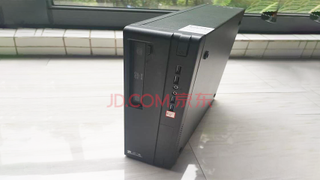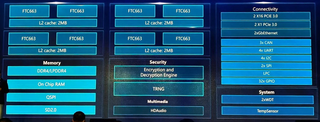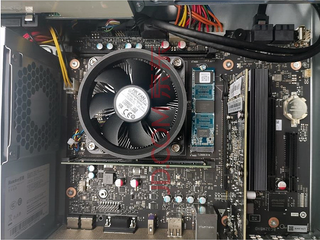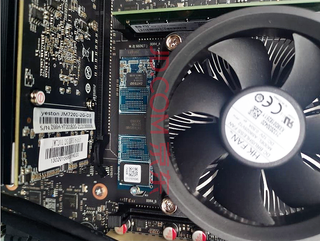Blacklisted Huawei Uses Blacklisted Phytium CPU for New Desktop PC
Dressed in all black: inside and outside.

Over the past few years, the U.S. government added Huawei and Phytium to its Entity List, effectively preventing companies from accessing technologies developed in the U.S. without a special export license. However, these two blacklisted companies recently teamed up for a new desktop computer from YahBoom decked out in... black. The news apparently answers, at least partially, the question of just exactly how Huawei would execute its plans to build out its commercial PC business, a mystery that emerged just last week.
Huawei's Qingsong platform for entry-level desktops is based on Phytium's D2000 processor featuring eight custom Armv8 FTC663 cores running at 2.30 GHz with 8MB of L2 cache (2MB unified L2 per two cores) and a 4MB unified L3 cache. The motherboard has two slots for DDR4 memory modules, an M.2 slot supporting PCIe SSDs, two PCIe x16 slots, and one PCIe x8 slot. Basic I/O ports include a GbE connector, five USB 2.0 ports, 3.5-mm audio input/output jacks, and a COM port. Needless to say, the mainboard from two blacklisted companies is also black.

The Huawei Qingsong motherboard (used by YahBoom for its entry-level desktop) is equipped with 8GB of DDR4 memory, a 256GB NVMe M.2 SSD, and Yeston's Jingjia Micro-based graphics card with 2GB of DDR3 memory as well as two display outputs (HDMI and D-Sub/VGA). The machine has a DVD-RW optical disc drive and can house a 3.5-inch SATA HDD or SSD.

The system is currently available from JD.com (and was originally discovered by @momomo_us), and perhaps the biggest surprise is its price. The machine costs¥8,040 ($1,067 without VAT), which is on par with a relatively high-end desktop PC. Huawei and YahBoom are not the only PC suppliers with a Phytium D2000-based platform/desktop. Lenovo and Great Wall offer dozens of Phytium D2000-powered machines starting from ¥3,999 ($530 without VAT), so it is unclear why the YahBoom PC is so expensive.

Huawei cannot officially buy CPUs directly from AMD or Intel unless these processor makers get an appropriate export license from the U.S. Department of Commerce (which is reviewed with a presumption of denial) for a particular product family. The company also has problems ordering enough KunPeng 920 chips for its desktop PC initiative from TSMC as the latter also has to obtain an applicable license from the U.S. DoC.
So, to build its premium products, Huawei must buy AMD Ryzen or Intel Core CPUs from third-party resellers or after chipmakers get a proper export license. This approach may be good enough for premium products aimed at international markets. However, it is much easier for Huawei to obtain a low-end SoC from Phytium and build a PC that runs locally developed Linux distribution for China-bound mass-market products. However, YahBoom's desktop based on Huawei's Qingsong motherboard is way too expensive to fit into the mass-market category.
Stay On the Cutting Edge: Get the Tom's Hardware Newsletter
Get Tom's Hardware's best news and in-depth reviews, straight to your inbox.

Anton Shilov is a contributing writer at Tom’s Hardware. Over the past couple of decades, he has covered everything from CPUs and GPUs to supercomputers and from modern process technologies and latest fab tools to high-tech industry trends.

It’s been 30 years since Intel’s infamous Pentium FDIV bug reared its ugly head – a math bug caused Intel’s first CPU recall

AMD crowns the Ryzen 7 9800X3D a ‘gaming legend’ in a surprise announcement — chipmaker claims $479 Zen 5 3D V-Cache chip is up to an average 20% faster than Intel Core Ultra 9 flagship
Most Popular




